 by our College Data Analytics Team
by our College Data Analytics TeamAmeriTech College - Draper total enrollment is approximately 1,429 students. 1,026 are undergraduates and 113 are graduate students.
Male/Female Breakdown of Undergraduates
The full-time AmeriTech College - Draper undergraduate population is made up of 88% women, and 12% men.
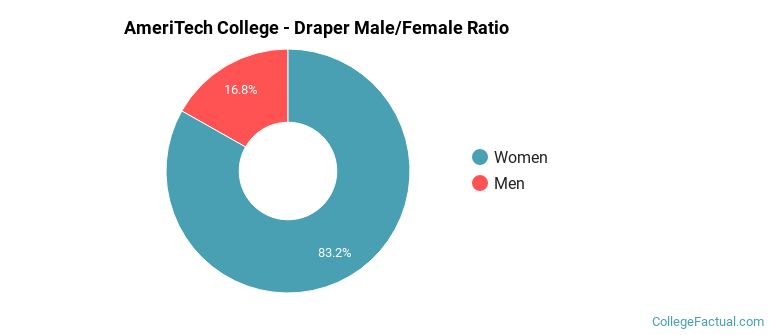
For the gender breakdown for all students, go here.
AmeriTech College - Draper Racial/Ethnic Breakdown of Undergraduates
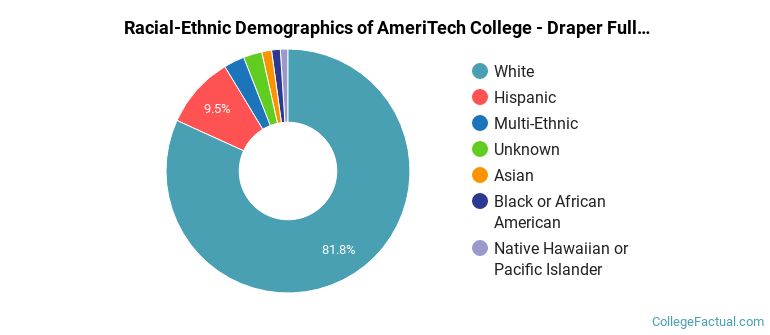
| Race/Ethnicity | Number |
|---|---|
| White | 812 |
| Hispanic | 116 |
| Unknown | 36 |
| Asian | 22 |
| Multi-Ethnic | 15 |
| Black or African American | 12 |
| Native Hawaiian or Pacific Islander | 9 |
| International | 0 |
See racial/ethnic breakdown for all students.
Male/Female Breakdown of Graduate Students
About 81% of full-time grad students are women, and 19% men.

For the gender breakdown for all students, go here.
AmeriTech College - Draper Racial-Ethnic Breakdown of Graduate Students

| Race/Ethnicity | Number |
|---|---|
| White | 91 |
| Hispanic | 15 |
| Asian | 4 |
| Native Hawaiian or Pacific Islander | 2 |
| Black or African American | 1 |
| International | 0 |
| Multi-Ethnic | 0 |
| Unknown | 0 |
See racial/ethnic breakdown for all students.
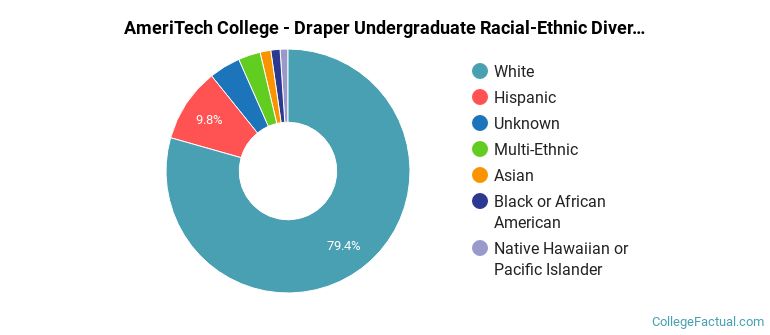
| Race/Ethnicity | Number |
|---|---|
| White | 1,119 |
| Hispanic | 174 |
| Unknown | 42 |
| Asian | 31 |
| Black or African American | 24 |
| Multi-Ethnic | 19 |
| Native Hawaiian or Pacific Islander | 15 |
| International | 0 |
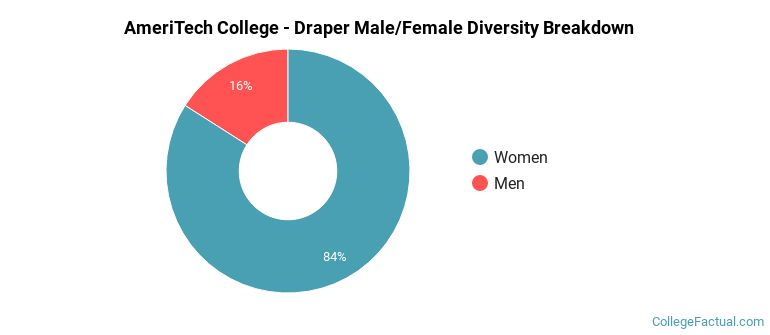
There are approximately 1,238 female students and 191 male students at AmeriTech College - Draper.
AmeriTech College - Draper ranks 2,112 out of 2,183 when it comes to geographic diversity.

The undergraduate student body is split among 1 states (may include Washington D.C.). Click on the map for more detail.
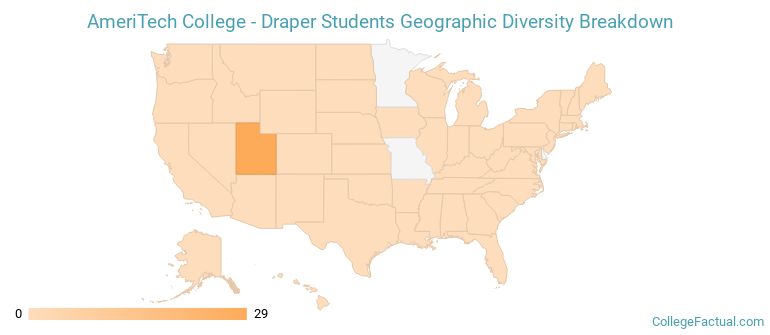
| State | Amount |
|---|---|
| Utah | 29 |
| Alaska | 0 |
| Alabama | 0 |
| Arkansas | 0 |
| Arizona | 0 |
A traditional college student is defined as being between the ages of 18-21. At AmeriTech College - Draper, 14.24% of students fall into that category, compared to the national average of 60%.
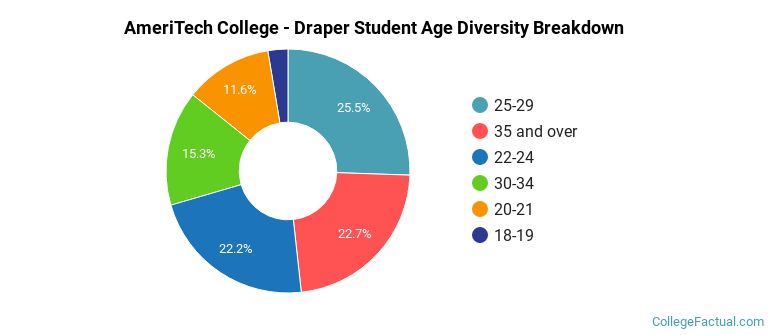
| Student Age Group | Amount |
|---|---|
| 25-29 | 154 |
| 35 and over | 137 |
| 22-24 | 134 |
| 30-34 | 92 |
| 20-21 | 70 |
| 18-19 | 16 |
| Under 18 | 0 |
Footnotes
*The racial-ethnic minorities count is calculated by taking the total number of students and subtracting white students, international students, and students whose race/ethnicity was unknown. This number is then divided by the total number of students at the school to obtain the racial-ethnic minorities percentage.
References
Department of Homeland Security Citizenship and Immigration Services
Learn more about how College Factual creates their Diversity Rankings.